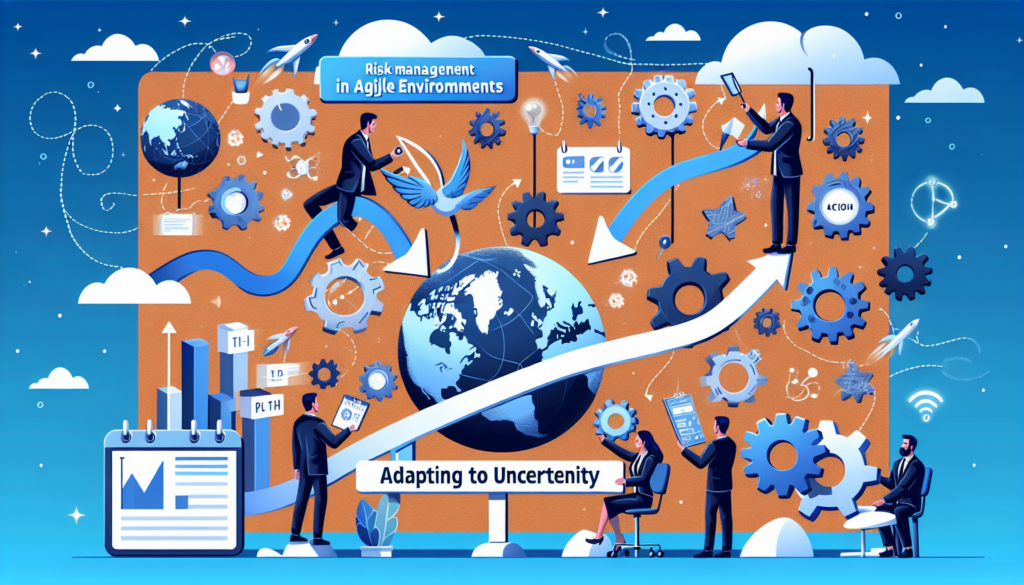In today’s landscape, risk management in Agile environments represents one of the critical challenges in ensuring the continuity and success of projects looking to rapidly adapt to market fluctuations and the evolving demands of users. The Agile methodology, with its focus on rapid iteration, intensive collaboration, and continuous delivery, requires a reevaluation of traditional risk management strategies. This article delves into advanced and recent methods, outlining the theoretical framework and practical applications, emphasizing case studies that illustrate how risks can be addressed in real-world contexts.
Fundamental Theory of Risk Management in Agile
The paradigmatic VUCA (volatility, uncertainty, complexity, ambiguity) model has catalyzed a new approach to risk management. Agile methodologies address this environment with risk management that is iterative, integrated into the development cycle, and focused on continuous improvement and adaptation. The fundamental premise lies in the ability to quickly identify risks and apply mitigation or acceptance strategies almost immediately.
Adaptation over Prediction: In contrast with traditional approaches, risk management in Agile prioritizes adaptation to changing circumstances over long-term prediction-based planning.
Multidisciplinary Collaboration: Agile teams promote transparency and collaboration, allowing the entire team to participate in risk identification and management.
Value over Conformity: While traditional risk management focuses on adherence to predefined plans and processes, Agile emphasizes value creation, which may lead to decisions that consciously assume certain risks to maximize benefits.
Advanced Strategies and Practices
Risk management in Agile is supported by a series of adaptive practices that enable a response to uncertainty.
Continuous Risk Identification
- Risk Forecasting Workshops: Collaborative sessions where techniques such as brainstorming and SWOT (Strengths, Weaknesses, Opportunities, Threats) analysis are used to anticipate risks.
- Information Radiators: Visual tools that, placed in common spaces, allow for the continuous dissemination and tracking of risks.
Quantitative and Qualitative Analysis
- Risk Modeling: Use of simulations, such as Monte Carlo, to understand the potential impact of risks.
- Estimation Techniques: Estimates that include risk variables, such as Planning Poker, which seeks consensus and considers the spectrum of risks and uncertainties.
Risk Response Plans
- Mitigation Strategies: Implementation of preventive or containment actions that reduce the likelihood or impact of risks.
- Contingency Reserves: Time or resources allocated to deal with unforeseen events, also known as “buffer” or cushion.
Monitoring and Review
- Retrospective and Proactive Reviews: Periodic analysis of the management of risks that have occurred and those that are still hypothetical.
- Iterative Feedback: Incorporation of lessons learned and adjustments based on data to continuously improve the risk management process.
Culture and Skills
- Agility Mindset: A flexible mindset approach where change is not seen as a threat but as an opportunity.
- Competency Development: Training focused on risk identification and management skills in an Agile context.
Comparison with Traditional Methodologies
The distinctive feature of risk management in Agile compared to traditional approaches lies in its speed and flexibility. While conventional methods depend on detailed plans and extended impact analysis, Agile incorporates risk management as a dynamic and constant process.
Relevant Case Studies
Software development for the financial sector: Companies like JPMorgan Chase have incorporated Agile methods to respond to emerging risks in software development, applying DevOps toolchains and automated testing for safe and rapid deployment.
ERP system implementation: The adoption of enterprise resource planning (ERP) systems is a complex project. However, companies like SAP have demonstrated that the use of Agile methodologies can reduce associated risks through iterative development and flexible customization.
Innovations and Future Directions
The incorporation of artificial intelligence (AI) and machine learning (ML) in Agile risk management opens new horizons. These technologies can predict and analyze risk trends with high precision, allowing for proactive and highly informed interventions.
Integration with Cybersecurity: As digital transformation progresses, security becomes a critical aspect, where Agile practices are expected to facilitate the incorporation of highly adaptive cybersecurity strategies.
Incorporation of the Customer Perspective: Agile already focuses on delivering value to the customer, but will move towards even closer integration of the customer into risk management, particularly in the identification and assessment phase.
Conclusion
Risk management in Agile environments is a constantly evolving field that requires a dynamic yet structured approach. With the active participation of multidisciplinary teams, the application of tailored strategies, and the integration of emerging technologies, organizations can not only react to risks but also anticipate them, ensuring their viability and success in an increasingly unpredictable business environment.

